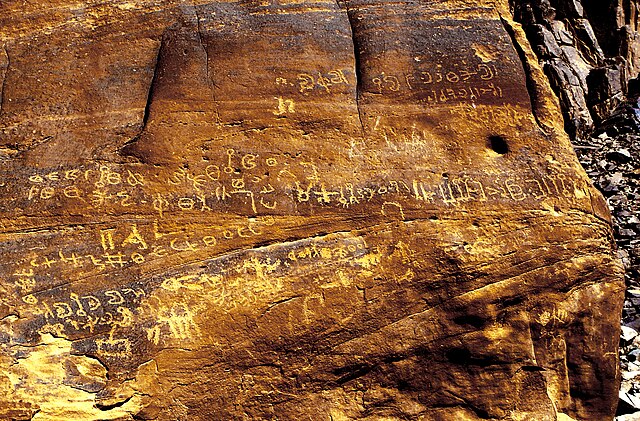Loading AI tools
Ancient Arabian script family From Wikipedia, the free encyclopedia
Thamudic, named for the Thamud tribe, is a group of epigraphic scripts known from large numbers of inscriptions in Ancient North Arabian (ANA) alphabets, which have not yet been properly studied. These texts are found over a huge area from southern Syria to Yemen. In 1937, Fred V. Winnett divided those known at the time into five rough categories A, B, C, D, E. In 1951, some 9,000 more inscriptions were recorded in south-west Saudi Arabia which have been given the name Southern Thamudic.[1]


Thamudic A is now known as Taymanitic. Thamudic E is now known as Hismaic. Southern Thamudic is also known as Thamudic F.
The Thamudic B inscriptions are concentrated in Northwest Arabia, but can be occasionally found in Syria, Egypt, and Yemen.[2]
The Thamudic C inscriptions are concentrated in the Najd, but can be found elsewhere across western Arabia as well.[2]
Thamudic D inscriptions are concentrated in northwest Arabia, and one occurs alongside a Nabataean tomb inscription in Hegra (Mada'in Salih) dated to the year 267 CE.[2]
Thamudic F texts come from the southwestern part of the Arabian Peninsula and seem to contain only names, although some of these names contain mimation and one example of a hl- */hal/ definite article.[2]
Seamless Wikipedia browsing. On steroids.
Every time you click a link to Wikipedia, Wiktionary or Wikiquote in your browser's search results, it will show the modern Wikiwand interface.
Wikiwand extension is a five stars, simple, with minimum permission required to keep your browsing private, safe and transparent.